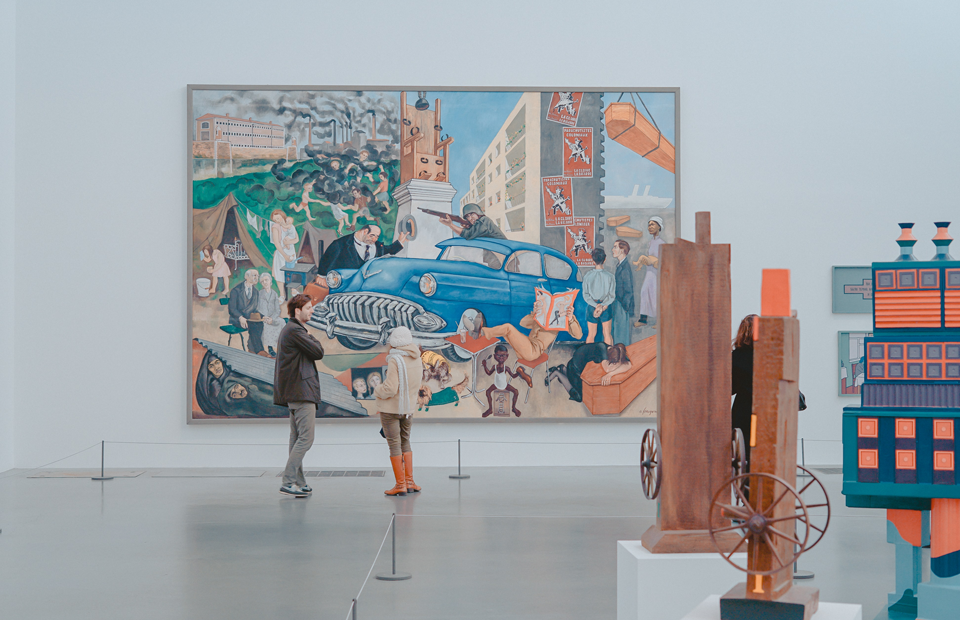Mastering the Art: Innovative Approaches to Modern Photography

1-12-2024, 06:04 Admin 2 614 0
Article Title: "Mastering the Art: Innovative Approaches to Modern Photography"
There is a popular saying in the world of photography: "The best camera is the one that's with you." In the world of modern photography, this has never been truer, given the impressive advances in technology and software that have transformed our phones and pocket-sized devices into high-powered cameras. They offer opportunities to photographers, both professional and amateur, to capture images efficiently while maintaining a powerful visual appeal. It is by harnessing this technology that we master the art, continually innovating our approach to photography and exploring its new frontiers. In this account, we navigate these modern tools, technologies, and strategies that are shaping the world of photography.
A notable development changing photography's face is the emergence of mirrorless cameras. Traditional DSLR cameras, equipped with a mirror box that reflects light into the viewfinder, have ruled the roost for a long. However, their electronic cousins potentially offer greater efficiency and flexibility. Rather than using a mechanical mirror system to switch the camera's view between the optical viewfinder and image sensor, mirrorless cameras use the “live view" on the rear screen or in an electronic viewfinder. This helps to shoot significantly faster, enabling rapid series of images ideal for wildlife and sports photography.
Meanwhile, the advent of drone photography is redefining perspectives. The literal bird's-eye view gives photographers access to angles previously limited to those with a helicopter. This technological innovation offers a novel viewpoint for capturing landscapes, real estate, and even weddings with remarkable efficiency. Adobe Photoshop Lightroom, for example, is instrumental in this development by providing a host of post-production tools to refine the images taken from significant heights.
Furthermore, 360-degree photography is shifting from the periphery into the mainstream, owing to virtual reality's popularization. Specialized 360 cameras, like the Ricoh Theta and Insta360, are enhancing the immersive experience of photography by enabling a panoramic view in a single shot.
Another breakthrough in photographic technology is the proliferation of computational photography. Rather than relying on optical processes alone, computational photography uses digital computation to augment or replace the traditional process. The resulting images are significantly sharper and exhibit higher dynamic range, making this an exciting area of development. Google's Night Sight feature in Pixel smartphones is an excellent example of this. It lets users take bright, detailed photos even in low-light conditions, an extraordinary achievement that can redefine our approach to night photography.
All these technological leaps have significantly enhanced the photographer's efficiency, allowing them to take innovative approaches towards their craft. But as we have seen, technology is merely the facilitator of creativity. The true art of mastering modern photography lies in a deep understanding of these tools, experimenting with the possibilities they offer, and using them to tell stories in new, visually compelling ways.
In conclusion, from mirrorless cameras, drone photography, 360-degree cameras to computational photography, technology is offering numerous opportunities for photographers to advance their skills and efficiency. By embracing these innovative tools and resources, we can indeed become masters in the beloved art of photography.
There is a popular saying in the world of photography: "The best camera is the one that's with you." In the world of modern photography, this has never been truer, given the impressive advances in technology and software that have transformed our phones and pocket-sized devices into high-powered cameras. They offer opportunities to photographers, both professional and amateur, to capture images efficiently while maintaining a powerful visual appeal. It is by harnessing this technology that we master the art, continually innovating our approach to photography and exploring its new frontiers. In this account, we navigate these modern tools, technologies, and strategies that are shaping the world of photography.
A notable development changing photography's face is the emergence of mirrorless cameras. Traditional DSLR cameras, equipped with a mirror box that reflects light into the viewfinder, have ruled the roost for a long. However, their electronic cousins potentially offer greater efficiency and flexibility. Rather than using a mechanical mirror system to switch the camera's view between the optical viewfinder and image sensor, mirrorless cameras use the “live view" on the rear screen or in an electronic viewfinder. This helps to shoot significantly faster, enabling rapid series of images ideal for wildlife and sports photography.
Meanwhile, the advent of drone photography is redefining perspectives. The literal bird's-eye view gives photographers access to angles previously limited to those with a helicopter. This technological innovation offers a novel viewpoint for capturing landscapes, real estate, and even weddings with remarkable efficiency. Adobe Photoshop Lightroom, for example, is instrumental in this development by providing a host of post-production tools to refine the images taken from significant heights.
Furthermore, 360-degree photography is shifting from the periphery into the mainstream, owing to virtual reality's popularization. Specialized 360 cameras, like the Ricoh Theta and Insta360, are enhancing the immersive experience of photography by enabling a panoramic view in a single shot.
Another breakthrough in photographic technology is the proliferation of computational photography. Rather than relying on optical processes alone, computational photography uses digital computation to augment or replace the traditional process. The resulting images are significantly sharper and exhibit higher dynamic range, making this an exciting area of development. Google's Night Sight feature in Pixel smartphones is an excellent example of this. It lets users take bright, detailed photos even in low-light conditions, an extraordinary achievement that can redefine our approach to night photography.
All these technological leaps have significantly enhanced the photographer's efficiency, allowing them to take innovative approaches towards their craft. But as we have seen, technology is merely the facilitator of creativity. The true art of mastering modern photography lies in a deep understanding of these tools, experimenting with the possibilities they offer, and using them to tell stories in new, visually compelling ways.
In conclusion, from mirrorless cameras, drone photography, 360-degree cameras to computational photography, technology is offering numerous opportunities for photographers to advance their skills and efficiency. By embracing these innovative tools and resources, we can indeed become masters in the beloved art of photography.
Related News
Leave a Comment


